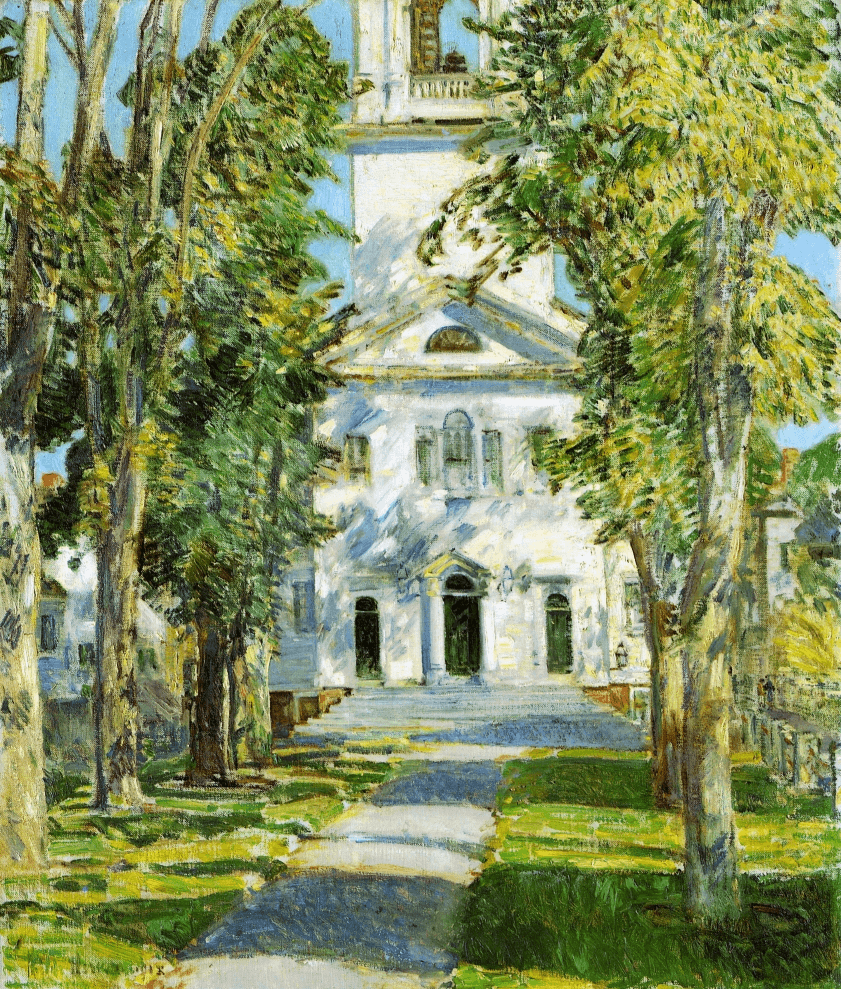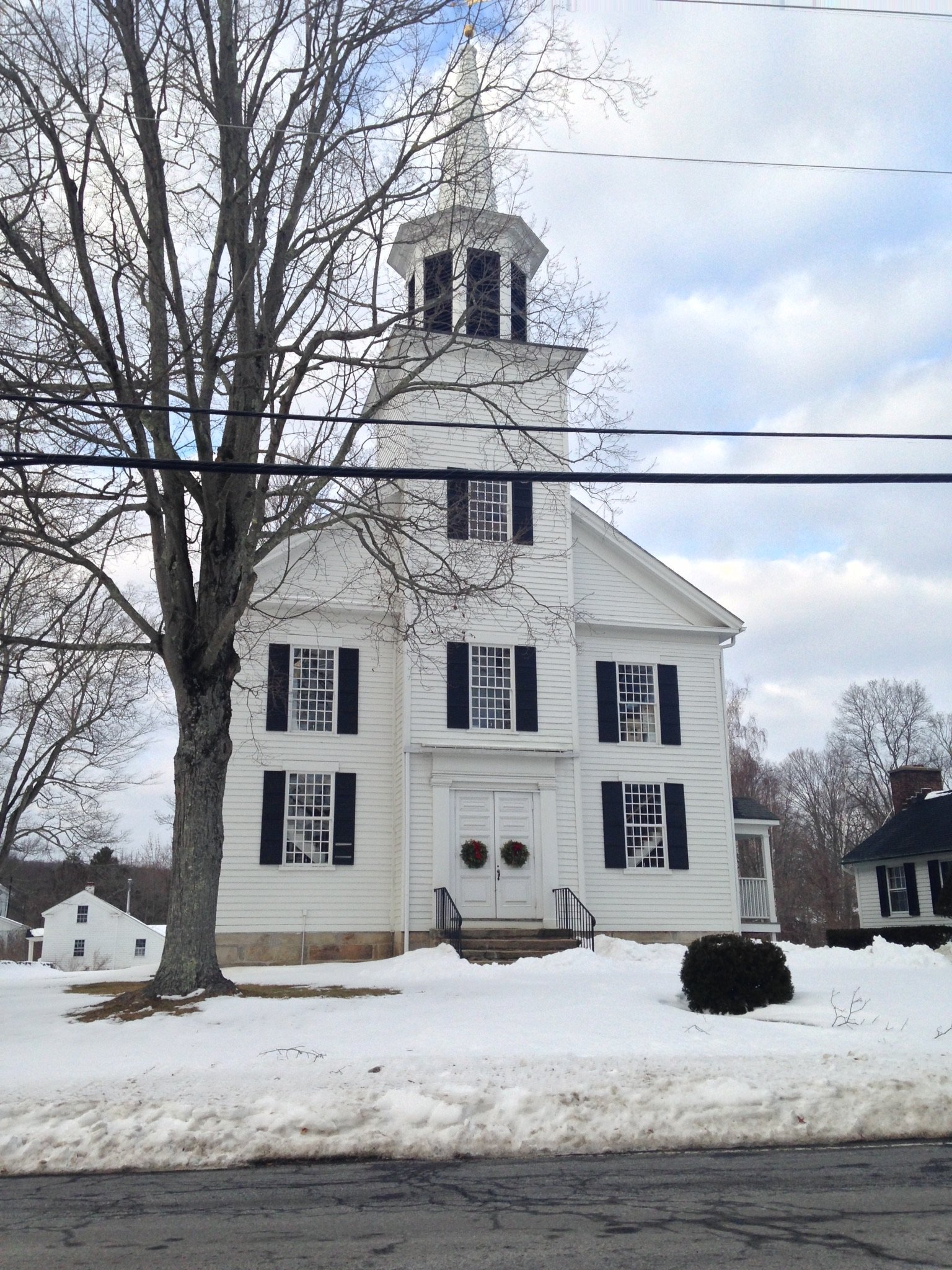Sometimes, I just walk past random artworks in museums and fall in love with them. This painting is definitely one such case; I went back to enjoy it several more times during my most recent visit to the Met. It’s The Church at Gloucester, 1918, by Childe Hassam. Hassam (1859-1935) was one of the most important and prolific of all American Impressionists.

The painting depicts an early 19th-century Universalist meeting house (church) in Gloucester, Massachusetts. Classic white churches just like this are very common sights in America, particularly New England. They usually have tall spires with belfries visible from far away. Examples in the early-American “Federal” style, like the one in the painting, are brick with classically-inspired details like pediments, columns, and arches over the windows and doors. Others are humbler wooden structures with plain windows and doors. Either way, they’re synonymous with small towns in the American Northeast, and you certainly won’t see churches like this anywhere else in the world.
I don’t know if this particular church still stands, but I see scenes very similar to this in my town and nearby towns, or when I take a road trip. I was so strongly attracted to this painting because it felt so familiar. I can picture the charming town center that’s likely to be nearby and imagine a pleasant afternoon spent walking around there. I’ve said before that part of the reason I love the Hudson River School is because it depicts places I know well, even if they’ve changed greatly in the meantime. The same is true of this later American painting, only this timeless scene has hardly changed at all.

Hassam was a born Yankee (a term for someone from the New England states), and he believed that classic New England life represented the true American spirit. Others must agree, since this painting is often referred to as “patriotic” (see both sources below), although there isn’t a single American flag or soldier in sight. Hassam is known for his big-city scenes of New York and Paris, but he also painted many New England towns, churches, gardens, and coasts. I previously wrote about his Church at Old Lyme, a related work that appeals to me for similar reasons to what I’ve described here.
Sources
- “The Church at Gloucester“. Metropolitan Museum of Art online collection database.
- Larkin, Susan G. “Chapter 4: Hassam in New England, 1889-1918” in Childe Hassam, American Impressionist by H. Barbara Weinberg et al. New York: Metropolitan Museum of Art, 2004. P. 119-178.

